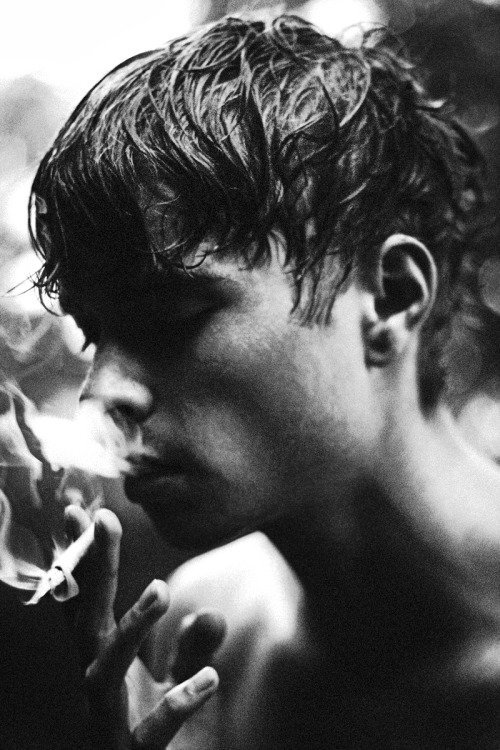Damon Baker is a well known photographer who specialises in portrait photography. He works a lot with high profile celebrity’s. Baker is one of my favourite photographers, I had chosen to research him for this image making portraits because I lot the way he pulls emotions and new appearances out of his models. During this unit I am going to include some portrait work so I thought it necessary to research at least one or two portrait photographers. Damon Baker works with celebrities and models like no other photographer I know of. He photographs them as if he is photographing their alter-ego, bringing out the darker and the inner depths of the sitters personalities.
As a photograph this is something I aspire to do. When looking at other photographers work I often see a lot of the same thing, however with Damon’s work we still see the model/celebrity that we all know however we as an audience are seeing them in a whole new way. Baker dropped out of school at the age of 17 and moved to New York to peruse a career in photographer. At the age of 18 he was spotted by Jet Root and made his debut as a professional photographer in 2008. He has since photographed numerous amounts of very well known celebrities and models.
Baker uses numerous techniques to get the photographs he wants, Baker said in an interview for TCD films that he often likes to spend an hour just talking with the model before he even begins the shoot, just get a feel for their personality and their background. Baker says that his ‘trick’ for getting the photographs he wants is to talk to the model, let them believe that they are best friends in order for the sitter and himself to feel completely comfortable with one another. I think this is a great technique to use in portrait photography as the sitter is more likely to feel more comfortable having their photograph taken if they feel a connection with the photographer. This is defiantly something I will try in the future in my own photographs.
Damon Baker is known for his use of black and white photographs, in an interview he stated that he thinks that black and white photography just has this time less look to it. This is something I can defiantly relate to as most of my photographs especially my portraits are mostly in black and white, I personally use black and white for my own photographs because I think it takes away distractions so the audience are just focused on the persons expression and facial features. For this image making unit I am going to take the work of Damon Baker as part of my inspiration for the portraits I am going to feature in my photo book ‘people and places’ I feel that I can learn a lot from Baker and will continue to look at and follow his work.


